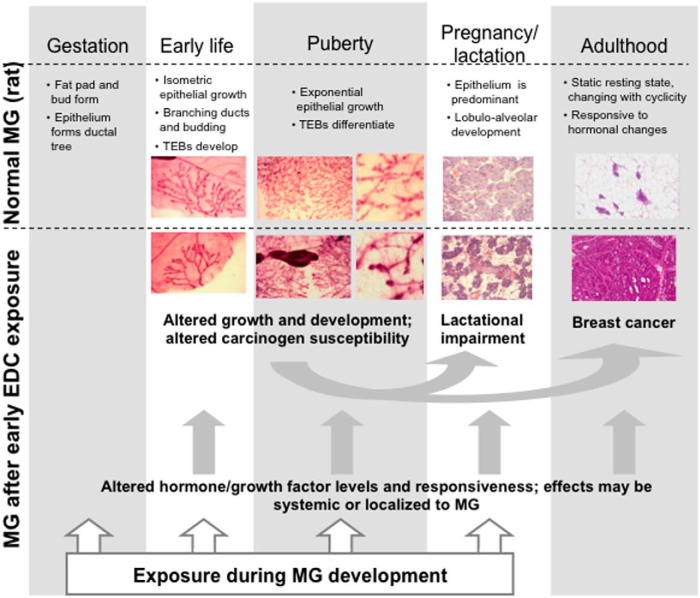Figure 8.
Stages of normal rat mammary gland (MG) development and effects of environment on subsequent events. Different effects and outcomes after EDC exposure are strongly dependent upon the age of exposure (neonatal period, puberty, pregnancy) and time of analysis. Early-life effects such as altered thelarche or gynecomastia present themselves in adolescents, whereas effects on lactation or mammary tumorigenesis become evident during adulthood. Arrows indicate plausible (gray) or more certain (white) mechanistic pathways. Photomicrographs for early life and puberty were all taken at 16× magnification on a macroscope. [Adapted from R. R. Enoch et al: Mammary gland development as a sensitive end point after acute prenatal exposure to an atrazine metabolite mixture in female Long-Evans rats. Environ Health Perspect. 2007;115:541–547 (884), with permission.] Photomicrographs for pregnancy/lactation and adulthood were taken at 10× magnification on a standard microscope (from S.E.F.). [Reprinted from Figure 1 in R. A. Rudel et al: Environmental exposures and mammary gland development: state of the science, public health implications, and research recommendations. Environ Health Perspect. 2011;119:1053–1061 (801), with permission.]

